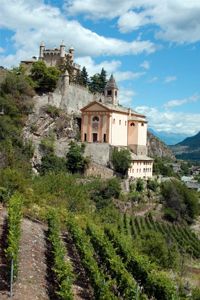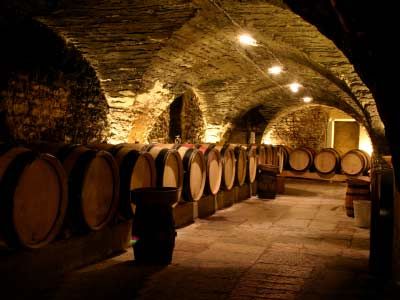They say good things come in small packages. This might not always be true, of course, but it certainly applies to Italy's Aosta Valley wine region.
Aosta is Italy's smallest province. The jagged peaks of the Alps stab into the region's sky. The Dora Baltea river threads through it in a long, narrow valley. At one end is the famed crest of Mont Blanc. The closest major city is Turin (Torino), in the adjacent region of Piedmont.
Advertisement
Tiny as it is, the river valley connects Italy to Switzerland and France. Indeed, Aosta is one of Italy's few bilingual regions -- its official languages are Italian and French. And where cultures overlap, interesting flavors emerge. Aosta has its own native grapes, but it has also been growing French and Swiss varietals for nearly 20 centuries [source: Abney].
The Aosta Valley has one DOC designation that covers more than 20 styles of wine [source: Abney]. A DOC wine is origin-certified -- that is, its production is subject to certain controls. Aosta is known for its white wines, but its reds are notable as well. In fact, reds constitute the majority of the valley's production.
The white Prié grapes of the Aosta Valley produce a perlé that shows its mountain origins. Its local nickname is "bianco dei ghiacciai" -- the white wine of the glaciers. It is dry and citrusy, retaining an aroma of mountain herbs [source: Wein-Plus]. Perlés are lively, flirtatious wines, neither as flat as a natural wine nor as fizzy as a sparkling wine.
This article takes a look at the history, culture and agriculture of the Aosta Valley wine region. We'll also examine several Aosta wines in more detail. Cheers!
Advertisement


